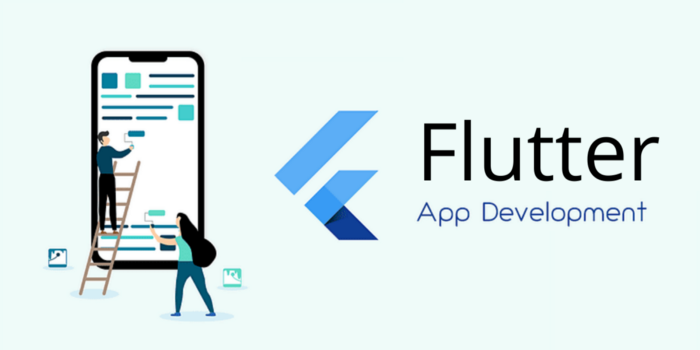
What is Flutter?
Flutter is a cross-platform software development kit (SDK) for mobile app development. Flutter used the Dart programming language to make apps for Android and iOS devices. Because it is cross-platform, it allows for the creation of apps with a native appearance and feels on both Android and iOS devices using a single code base. Flutter is a strong and dependable framework that allows you to create attractive apps easily. Flutter’s development process is speedy due to its features and architectural considerations, making it appropriate for producing short prototypes and MVPs and sophisticated apps and games. Flutter uses the Dart programming language, a modern, object-oriented language created by Google. Through its support for native and web development, as well as its use of powerful tools like the Flutter SDK, App Engine, and Firebase, Dart makes it easy to quickly build high-quality mobile apps with Flutter.

Flutter Version 2.0
Flutter 2 was released by Google in 2021. Many of the features were taken the same as from the Flutter 1 like 60fps animations, hot reload, restart. The web application and desktop version were no longer in the beta phase and now using a single code developers could create applications for Android, iOS, Linux, macOS, Windows. The app crashing bug was resolved and inbuilt context, a have menu feature was also introduced. The main feature of all was Null Safety which was introduced in flutter 2. Two new widgets are introduced named ScaffoldMessenger and AutoComplete. allows the developer to use the same codebase for all the five operating systems: Android, iOS, Linux, Windows, and macOS. The desktop support which was not in Flutter 1 is introduced to us in Flutter 2. The best feature of all they introduced null safety which removed the unnecessary App crashing.
Flutter Version 3.0
The Flutter 3 delivery supports macOS for Universal Binaries so that Flutter applications can work natively on Apple Silicon chips and Intel. Google has teamed up with Ubuntu’s Canonical for the Linux delivery to convey a profoundly incorporated cream of the cream choice for application development. also supports Material Design 3, the next generation of Material Design. Flutter 3 provides opt-in support for Material 3; this includes Material You features like dynamic color, an updated color system and typography, updates to many components, and new visual effects introduced in Android 12 like a new touch ripple design and a stretch over scroll effect.
Flutter 3 further improved the performance of opacity animations in simple cases. This release introduces a mechanism that estimates the rendering complexity of pictures based on the cost of draw operations that it contains. Using this as the raster cache admissions policy reduced memory usage without regressing performance in the benchmarks.
- In here are the Listed Updates of the Flutter Version
| Version (2.0) | Version (3.0) |
| Null Safety (removes App crushing) | Removing Windows 7/8 for development |
| Accessibility on Selected desktop platforms(Windows and Android) | Accessibility on all desktop platforms ( Windows, Android, Linux and macOS) |
| Flutter’s Web Support (Stable) | Cascading menus and support for the macOS system menu bar |
| Platform Adaptive Apps (Android, iOS, and the Web) | Flutter’s Game Toolkit |
| Update of iOS Features | Mobile Update (Foldable phone support) |
| New widgets: Autocomplete and ScaffoldMessenger | Mobile Update (Simplified iOS releases) |
| Implementation of Google Mobile Ads | Mobile Update (Inline ads on android) |
| Flutter DevTools | Gradle version update |
| Add-to-App (existing code from iOS to Android or Vice-Versa) | Performance improvements |
| Flutter Fix ( List of available fixes) | Theme extensions |
| Web app lifecycles |
Conclusion
After learning what’s new in Flutter 3.0, it seems there is nowhere to grow. Yet the project managers are 100% positive that the Flutter ecosystem will expand in the nearest future. So we have to sit back and await optimized upcoming features in UI&UX, functionality, and much more.
Overall, there are both advantages and disadvantages to using Flutter. With Flutter 2 it is much more user-friendly since this is what we are known and the first to allow to use the same codebase for all the operating system. Still with no exception The Flutter 3 already have a stable updates than what the Flutter 2 has and really has been stepping up their Features. It is irrefutable that the community merits all commendations for accomplishing this great work to assist Flutter with achieving the situation with advancement to keep up with its type of aiding organizations of every kind across the world.
References:
https://azumo.com/insights/what-is-flutter
https://medium.flutterdevs.com/flutter-3-0-whats-new-in-flutter-12259bf090ba
https://docs.flutter.dev/development/tools/sdk/release-notes
